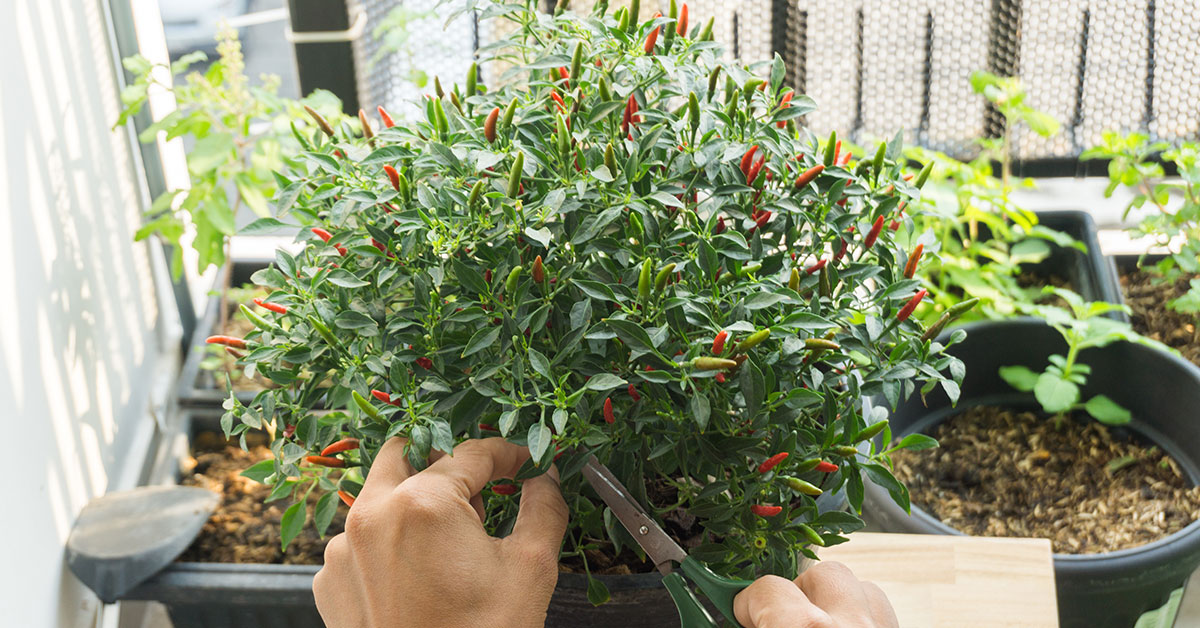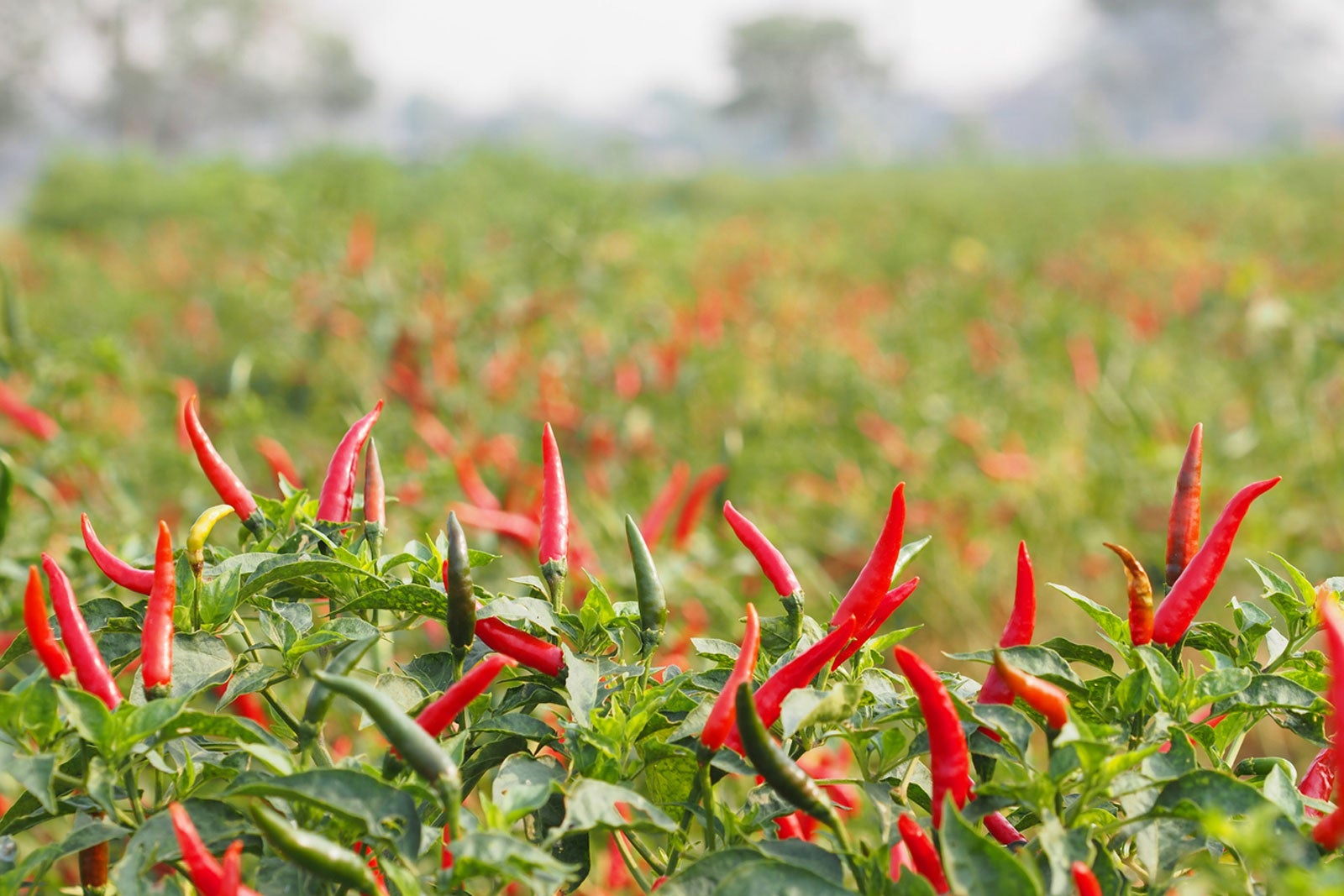Hot Thai pepper plant, a captivating member of the Capsicum family, embarks us on a journey of culinary and medicinal exploration. With its fiery Scoville rating and rich capsaicin content, this plant tantalizes taste buds and offers a treasure trove of health benefits.
Originating in Southeast Asia, the hot Thai pepper plant boasts a rich history steeped in traditional cuisines. Its botanical characteristics, including its compact size, vibrant foliage, and prolific fruit production, make it a captivating addition to any garden.
Hot Thai Pepper Plant Overview

Originating in Thailand, the hot Thai pepper plant, scientifically classified as Capsicum annuum, has a rich history dating back centuries. It is a member of the nightshade family and closely related to bell peppers, chili peppers, and cayenne peppers.
The hot Thai pepper plant is characterized by its compact size, typically reaching heights of 18-24 inches. It has a bushy habit with upright stems and glossy, dark green foliage. The leaves are ovate to lanceolate in shape with pointed tips and serrated edges.
Scoville Scale Rating and Capsaicin Content
The hot Thai pepper ranks high on the Scoville scale, a measure of the pungency of chili peppers. It typically ranges from 50,000 to 100,000 Scoville heat units (SHU), indicating a moderate level of heat. This pungency is attributed to the presence of capsaicin, a compound that binds to pain receptors in the mouth and mucous membranes, triggering a burning sensation.
Cultivation and Care

Hot Thai pepper plants thrive in warm, humid climates with ample sunlight. Proper soil preparation, planting techniques, watering, fertilization, and pest management are essential for successful cultivation.
Soil: Well-drained, loamy soil with a pH of 6.0-6.5 is ideal. Amend heavy soils with organic matter like compost or manure to improve drainage.
Sunlight: Hot Thai peppers require at least 6 hours of direct sunlight per day. Provide adequate sunlight to promote healthy growth and fruit production.
Temperature: Optimal temperatures for germination are between 75-85°F (24-29°C). Plants can tolerate temperatures up to 95°F (35°C) but may suffer from heat stress if temperatures exceed this range.
Planting Techniques
Seed Starting: Sow seeds indoors 8-10 weeks before the last frost. Keep soil warm and moist at a temperature of 75-85°F (24-29°C). Harden off seedlings gradually before transplanting.
Transplanting: Transplant seedlings outdoors when the soil temperature reaches 65°F (18°C) and there is no risk of frost. Space plants 18-24 inches apart in rows 3 feet apart.
Watering and Fertilizing
Watering: Water plants deeply and regularly, especially during hot, dry weather. Avoid overwatering, as it can lead to root rot.
Fertilizing: Fertilize plants every 2-3 weeks with a balanced fertilizer high in nitrogen and phosphorus. Avoid over-fertilizing, as it can lead to excessive vegetative growth.
Pest Management, Hot thai pepper plant
Hot Thai pepper plants are relatively pest-resistant, but they can be susceptible to aphids, spider mites, and thrips. Monitor plants regularly for pests and treat with appropriate organic or chemical controls as needed.
Culinary and Medicinal Uses: Hot Thai Pepper Plant
:max_bytes(150000):strip_icc()/GettyImages-652320636-4d4f49b8761c4669912e7dc722e656d8.jpg)
Hot Thai peppers, known for their intense heat, have gained prominence in culinary and medicinal practices.
Culinary Uses
Thai peppers are an indispensable ingredient in various cuisines worldwide. Their distinct spiciness adds depth and flavor to dishes. In Thai cuisine, they are a staple in spicy soups, curries, and salads. Indian cuisine incorporates them into dishes like vindaloo and tikka masala. Mexican cuisine utilizes them in salsas, sauces, and marinades.
Medicinal Properties
Capsaicin, the compound responsible for the heat in Thai peppers, possesses numerous health benefits. It has analgesic and anti-inflammatory properties, making it effective in reducing pain and inflammation. Capsaicin is also a potent antioxidant, protecting cells from damage caused by free radicals.
Meal Ideas
To incorporate hot Thai peppers into your diet, consider the following recipes:
– Spicy Pad Thai: A classic Thai dish featuring rice noodles tossed in a flavorful sauce with hot Thai peppers.
– Green Curry with Chicken: A rich and aromatic curry made with coconut milk, green chilies, and chicken.
– Tom Yum Soup: A spicy and sour soup with a blend of Thai herbs, hot peppers, and shrimp.
